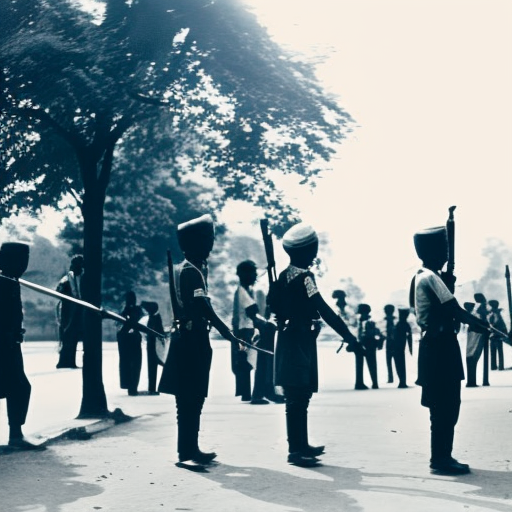Summary:
The Indian independence movement was a series of protests, campaigns, and acts of civil disobedience led by various political and social groups in India between the late 19th century and 1947. The movement aimed to end British colonial rule and establish an independent India. It was characterized by a variety of strategies, including nonviolent resistance, mass protests, boycotts, and negotiations with the British government. The movement ultimately succeeded in achieving its goal, leading to the creation of the independent nations of India and Pakistan.
Background:
India had been under British colonial rule since the mid-18th century, when the British East India Company gained control over large parts of the country. Over time, discontent grew among the Indian population due to discriminatory policies, economic exploitation, and the erosion of traditional social and cultural structures. The Indian National Congress (INC), founded in 1885, became the primary political organization advocating for independence.
Early Phase:
The early phase of the independence movement was marked by moderate demands for greater representation and reforms within the existing colonial framework. Leaders such as Dadabhai Naoroji, Gopal Krishna Gokhale, and Bal Gangadhar Tilak played significant roles in raising awareness about Indian grievances and pushing for political rights.
Nonviolent Resistance:
Mahatma Gandhi emerged as the prominent leader of the independence movement in the 1920s. He advocated for nonviolent resistance and civil disobedience as the means to achieve independence. The Salt March in 1930, where thousands of Indians marched to the Arabian Sea to produce salt in defiance of the British salt monopoly, became a turning point in the movement. Gandhi’s philosophy of Satyagraha (truth-force) inspired millions of Indians to join the struggle for freedom.
Mass Protests and Boycotts:
Mass protests and boycotts of British goods became widespread during the 1920s and 1930s. Indians refused to buy British textiles, liquor, and other products, severely impacting the colonial economy. The Quit India Movement in 1942, led by Gandhi and the INC, called for the immediate withdrawal of the British from India. The movement was met with harsh repression, but it demonstrated the widespread support for independence.
Role of Women:
Women played a crucial role in the independence movement. Leaders like Sarojini Naidu, Annie Besant, and Kamala Nehru actively participated in protests, organized women’s organizations, and fought for gender equality. The participation of women in the movement helped challenge traditional gender roles and contributed to the broader struggle for independence.
Partition and Independence:
As the movement gained momentum, the demand for a separate Muslim state grew louder. The All India Muslim League, led by Muhammad Ali Jinnah, advocated for the creation of Pakistan to protect the interests of the Muslim minority. The British government eventually agreed to the partition of India, leading to the creation of India and Pakistan as separate nations on August 15, 1947.
Legacy:
The Indian independence movement had a profound impact on the world. It inspired other colonized nations to fight for their freedom and influenced the development of nonviolent resistance movements globally. The movement also led to the adoption of a democratic system in India and laid the foundation for the country’s future development and challenges.
In conclusion, the Indian independence movement was a long and arduous struggle that involved various strategies and the participation of millions of Indians. Through nonviolent resistance, mass protests, and negotiations, the movement succeeded in ending British colonial rule and establishing independent India and Pakistan. The movement’s legacy continues to shape the political, social, and cultural landscape of the region.












